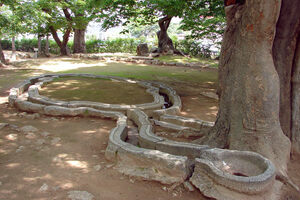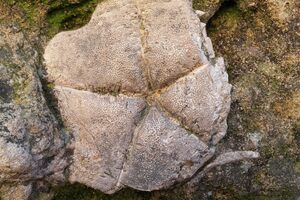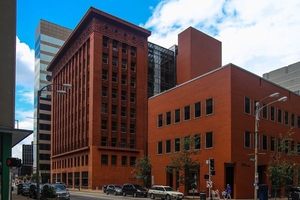Poseokjeong Pavilion in Gyeongju, South Korea

Between the 7th and 9th-centuries, the city of Gyeongju was the main cultural and political center of Korea, as the capital of the powerful Silla Kingdom that conquered most of the Korean peninsula.
During this period, known as Unified Silla, many grandiose palaces were constructed in the prosperous city. The Poseokjeong Pavilion was one of these structures, part of what once was a large royal villa probably dating back to the 9th-century. Sadly, the palace was destroyed and all that remains is a granite water feature that was located in the pavilion.
This hand-carved, abalone-shaped watercourse was used to perform traditional drinking games. The nobles would sit around the canal during banquets, floating their alcohol-filled cups on the watercourse and sending them to their peers, challenging them to drink and recite poems when the cup stopped in front of them.
During another game, the first person would recite a line of poetry and the next participant would have to continue with a fitting second line before the cup could reach them. The total length of the canal is 72 feet (22 meters) long, and thanks to its odd shape and many curves, the speed of the cups would vary greatly.





